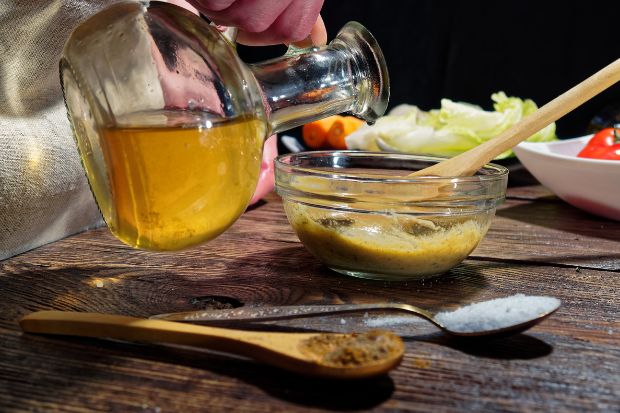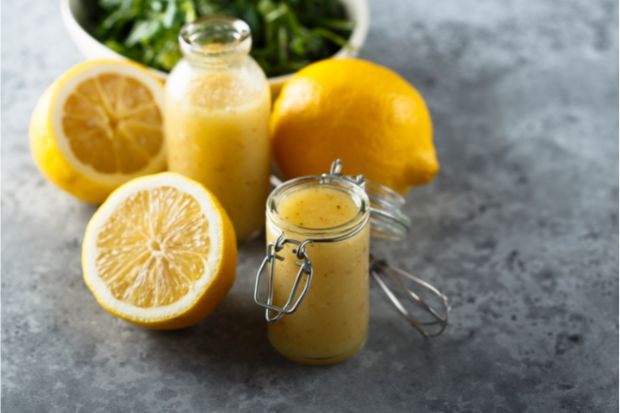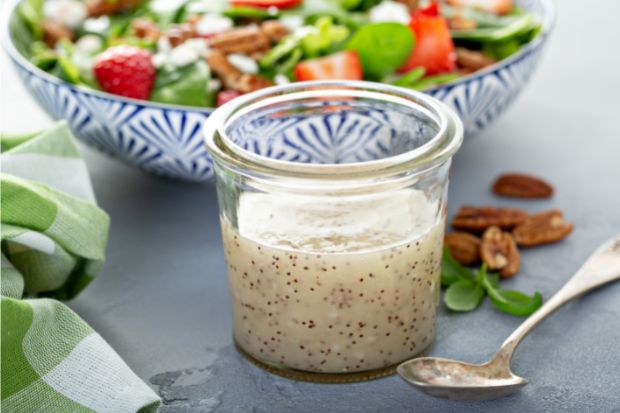Homemade salad dressing is simple and delicious, and it’s free of chemicals and preservatives. That being said, some of those additions help stabilize store-bought dressings. You may find your homemade versions often separate or solidify, particularly when refrigerated.
This is perfectly normal and if you simply bring your homemade dressing back up to room temperature and give it a good shake, it should be good to go.
We know a few tricks you can apply to keep your homemade salad dressing from solidifying in the first place, such as using winterized olive oil, using an alternative to olive oil, or properly emulsifying your oil.
Try these simple fixes to keep your dressing smooth and consistent at any temperature.
4 Ways to Keep Salad Dressing From Solidifying
Don’t Use Olive Oil

Many people prefer using extra virgin olive oil (EVOO) throughout their cooking process, but it is likely the cause of your salad dressing solidifying when it’s refrigerated. EVOO contains fatty acids, which separate and solidify when cooled.
Try using a high-quality alternative oil such as grapeseed, flax, or pumpkin seed. Walnut oil also makes a delicious and healthy dressing base. If you really want to use olive oil, try refined olive oil or olive pomace oil instead of EVOO, or try using half EVOO and half vegetable, seed, or nut oil.
Try Winterized Olive Oil

It can be a bit harder to find, but if you’re stuck on using olive oil, you might want to give winterized olive oil a try.
Winterizing olive oil is the process of removing the solids (mostly wax) from the oil so that it remains liquid at cold temperatures. This was originally done so that oils would remain usable through the cold winter months but is now most commonly done so that oils will remain liquid when used in dressings and other sauces that will be refrigerated.
Don’t Refrigerate
If you’re making a simple oil and vinegar dressing, there’s really no need to refrigerate it. Whip up a small batch and leave it on the counter to be used as needed. Adding some fresh herbs is a nice touch, but once you get into things like raw garlic or mustard you’ll want to make sure you pop that dressing into the fridge.
It can be a good idea to keep a simple dressing on the counter for quick things on the fly, and have a more complex fancy dressing that you keep in the fridge. Just remember to pull it out about 15 minutes before you need to use it and you should be good to go.
Properly Emulsify

If you’re like me, you throw a bunch of delicious things into a jar, whisk it up, and off you go! If you make your dressing in single serving batches, that method works just fine, but if you’re looking to make a full bottle to store in the fridge, properly emulsifying your oil can make a big difference.
Start by blending all of your ingredients except the oil. While continuing to whisk, slowly drizzle in your oil. This will break your oil into tiny droplets that will mix with your base and create a smoother, more well-integrated dressing.
There’s really no harm in a dressing that solidifies, but it is rather inconvenient and you may find that the flavor is less consistent when the dressing is repeatedly cooled and then brought back to room temperature.
There are plenty of ways to make a dressing that will stay liquid in the fridge. Give the above options a try and hopefully you’ll find something that works for you.
